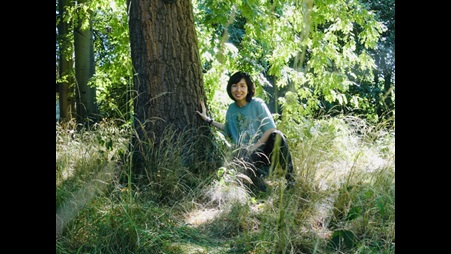Research Staff
Ms Aireen PHANG

Email Address: aireen_phang@nparks.gov.sg
Research Interests
I work on the taxonomy and systematics of Malesian Sapotaceae, particularly Palaquium and Madhuca, and my recent research has focused on species delimitation using molecular methods of target capture, as well as conservation genomics of selected Singapore populations. I am also interested in the use of herbarium digitisation to complement traditional data sources for plant taxonomic research and collaborate closely with the Royal Botanic Garden Edinburgh, which hosts the online Sapotaceae Resource Centre. In addition, I am revising Dioscoreaceae and Taccaceae for the Flora of Singapore.
Current Research
2. Revisionary work on Sapotaceae for the Flora of Singapore
3. Revisionary work on Dioscoreaceae and Taccaceae for the Flora of Singapore
| Phang, A., Niissalo, M.A., Ruhsam, M., Pezzini, F.F., Neo, W.L., Burslem, D.R.F.P., Middleton, D.J., Wilkie, P. & Khew, G.S. (2024). Genetic erosion in a tropical tree species demonstrates the need to conserve wide-ranging germplasm amid extreme habitat fragmentation. Biodiversity and Conservation 33: 2527–2548 |
|
Phang, A., Pezzini, F.F., Burslem, D.F.R.P., Khew, G.S., Middleton, D.J., Ruhsam, M. & Wilkie, P. (2023). Target capture sequencing for phylogenomic and population studies in the Southeast Asian genus Palaquium (Sapotaceae). Botanical Journal of the Linnean Society 203(2), 134-147 |
|
Phang, A. (2023). Novel observations of chiropterophily in Palaquium obovatum and flower visitation by Cynopterus brachyotis. Nature in Singapore 16: e2023001 |
| Phang, A., Atkins, H. & Wilkie, P. (2022). The effectiveness and limitations of digital images for taxonomic research. Taxon 71(5), 1063-1076 |
| Chan, P.J., Lam, W.N., Ting, Y.Y., Phang, A., Chong, R., Rahman, N.E. & Chong, K.Y. (2022). Towards a field guide to the trees of the Nee Soon Swamp Forest (VIII): Sapotaceae. Nature in Singapore Supplement 1: e2022074 |
|
Phang, A. (2021). Flora of Singapore precursors, 27: Typifications in the yam family (Dioscoreaceae) and the resurrection of Dioscorea tenuifolia. Gardens’ Bulletin Singapore 73(2): 279-292. |




